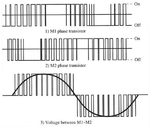thannara123
Advanced Member level 5
I am planning to make 500 watt sin wave invert-er .?
May i get any good reference to start ?
What are the basic consideration for the invert-er ?
May i get any good reference to start ?
What are the basic consideration for the invert-er ?


